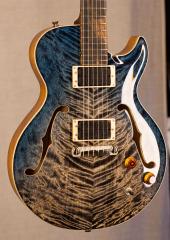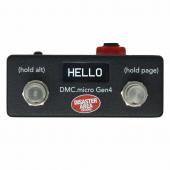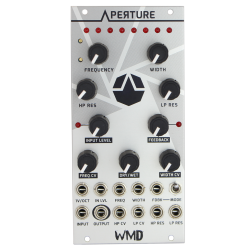WMD Aperture
Brands:
The Aperture is a variable-width bandpass filter with fast and tactile controls. It is capable of simple filtering, self oscillation FM timbres, nasty acidic squelches, and capturing images of UFOs descending from the heavens on a cold winter’s night. The concept is a bandpass that ranges from transparent to gnarly, with precision controls that behave under stress, all while being joyful to wreak havoc with.
Features include:
- Variable bandwidth via tactile and CV controls
- Eight pole filter core
- Independent resonance and self oscillation of both sides of the filter with CV
- Feedback circuit with two modes and CV
- Input level VCA
- Additional CV for opening the band either side of Center
- V/oct tracking
- Temperature compensated
- Dry / Wet mix for parallel filtering sounds
Controls
*LEDs along the top indicate width and position of the filter
Knobs:
Frequency: Controls the center frequency of the band
Width: Controls the width of the band.
Freq CV: Attenuverter for the CV input for precise control over the Frequency of the filter.
HP Res: Controls the amount of resonance on the High Pass side of the filter.
LP Res: Controls the amount of resonance on the Low Pass side of the filter.
Input Level: Attenuates the input level. Unity at 12o'clock, total gain of 6 dB
Dry/Wet Mix: You know what this means ;)
Width CV: Attenuverter for CV control over the width of the filter.
In LVL: Input for CV control over the input level attenuation.
Freq: CV input for control over the cuttoff frequency.
FDBK: CV input for control over the feedback amount.
Input: This is where your audio signal you want to filter goes.
Output: This is where the filtered audio signal comes out.
HPCV: CV input for independent control over the cutoff frequency on the high pass side of the filter.
LPCV: CV input for independent control over the cutoff frequency on the low pass side of the filter.
HP Res: CV input for control over the resonance on the high pass side of the filter.
LP Res: CV input for control over the resonance on the low pass side of the filter.










